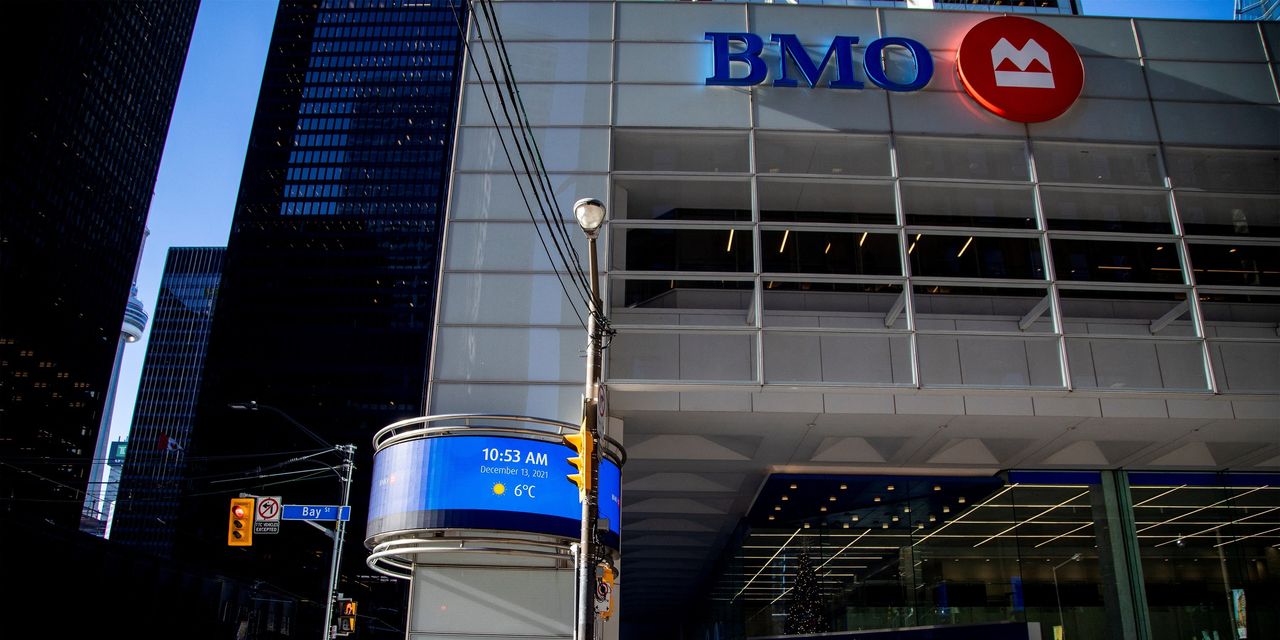
Bank of Montreal BMO -2.80% is in advanced talks to buy BNP Paribas’s BNPQY -2.15% U.S. unit, Bank of the West, in what would be one of the largest recent bank deals.
The Canadian bank could finalize an agreement as soon as this week, according to people familiar with the matter, assuming the talks don’t fall apart or get delayed.
Terms of the potential deal couldn’t be learned.
The deal would facilitate Bank of Montreal’s expansion into the U.S., where it has worked to build its presence in recent years. Combined, the banks would have some $870 billion in assets.
Bank of the West operates commercial- and consumer-banking segments, in addition to specialized financing and other services. The San Francisco-based bank has around $89 billion of deposits, assets of about $105 billion and roughly 500 branches in the Midwest and West. It has been owned by France’s BNP since 1979.
Bloomberg reported Thursday that BMO, as Bank of Montreal is known, had held initial talks about buying the BNP unit, which it said could be worth about $13.7 billion.
Bank of Montreal is the fourth-largest bank in Canada. Its U.S. division delivers about 38% of the bank’s revenue today, up from about 28% three years ago, Chief Executive Darryl White said on an investor call earlier this month. Earnings for the bank’s U.S. division rose 58% in the fourth quarter, compared with a 42% increase for its Canadian division.
In the U.S., BMO operates commercial, retail, wealth-management and capital-markets businesses. The bank has said it sees a major opportunity for growth in its U.S. wealth-management business.
BMO opened its first stateside branch in 1818, about a year after its founding. In the 1990s, it became the first Canadian bank to trade on the New York Stock Exchange. The firm has a market value of around $69 billion.
For larger Canadian lenders that want to expand, limited domestic options for growth have prompted them to look across the southern border.
Royal Bank of Canada, the country’s second-largest lender, bought Los Angeles-based City National Corp. for $5.4 billion in 2015. Canada’s biggest bank, Toronto-Dominion, now operates more branches in the U.S. than in Canada.
European lenders that planted flags in the U.S. starting in the late 1980s have failed to gain much ground. Royal Bank of Scotland Group PLC sold out of Citizens Financial Group Inc. in 2015. HSBC Holdings PLC said last year it would close one-third of its U.S. branches.
BBVA of Spain agreed to sell its U.S. arm roughly a year ago to PNC Financial Services Group Inc. for around $11.6 billion in a deal that created the fifth-largest retail bank in the U.S.
While big bank mergers have been rare since the 2008 crisis, there have been more so far this year than any time since then.
But federal financial regulators have expressed interest in tamping down on the spate of mergers. Democratic members of the Federal Deposit Insurance Corporation’s board have in recent weeks pushed to review regulations around big-bank mergers. Banking-industry officials fear that such a review by the FDIC or other regulators, namely the Federal Reserve and Office of the Comptroller of the Currency, could result in stricter controls on larger deals.
The continued consolidation of financial institutions leaves consumers with fewer banking options and reduces competition, progressive policy makers have argued. Regional banks see joining forces as the best way to fight paltry lending profits and the ever-rising outlays required to keep pace with the technology improvements of the largest banks.
Write to Cara Lombardo at [email protected] and Orla McCaffrey at [email protected]
Copyright ©2021 Dow Jones & Company, Inc. All Rights Reserved. 87990cbe856818d5eddac44c7b1cdeb8
Appeared in the December 20, 2021, print edition as ‘Bank of Montreal Seeks BNP U.S. Unit.’








